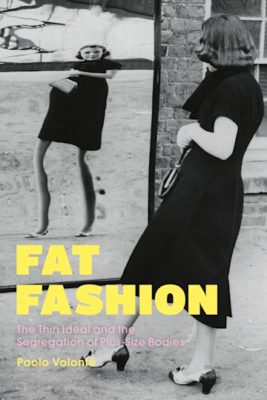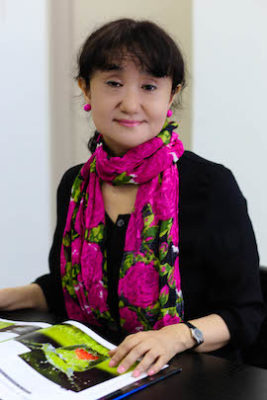Would you consider fashion to be size-inclusive in 2022?
If you answered yes, Paolo Volonté, author of Fat Fashion: The Thin Ideal and the Segregation of Plus-Size Bodies, would disagree with you.
 On November 3, Volonté virtually joined Dr. Yuniya Kawamura of FIT’s Sociology department for the Globally Connected @ FIT series to discuss his book. As an associate professor of cultural sociology at Politecnico di Milano, Volonté’s work focuses on the exclusion of “fat bodies” from fashion—and he insists we use the word.
On November 3, Volonté virtually joined Dr. Yuniya Kawamura of FIT’s Sociology department for the Globally Connected @ FIT series to discuss his book. As an associate professor of cultural sociology at Politecnico di Milano, Volonté’s work focuses on the exclusion of “fat bodies” from fashion—and he insists we use the word.
“People tend to avoid using this term because it’s considered offensive,” Volonté says. “Every time we use a euphemism not to say ‘fat,’ we confirm the idea that fat is bad.”
Volonté also describes what he calls the “thin ideal,” aka “a social, cultural construction” pushed by the fashion industry.
He explains that design, production, and media are all key ways the fashion industry excludes fat women. “Fat bodies are disguised in fashion design,” he says, noting that fashion students are still taught to cover, not cater to, larger bodies.
He also points out that fashion media still seldom features fat women, despite the growing trend of inclusivity.

Kawamura seems more hopeful about fashion’s recent diversity—though Volonté feels the shift is mostly in marketing. He says the current advertising trend of including a single plus-size woman among a group of slender ones is popular because “they are the exception—they make the headlines.”
Fat women are still excluded from major fashion lines, however. As of 2019, Volonté says, brands like Alexander McQueen, Balenciaga, Balmain, Christian Dior, and Louis Vuitton still did not sell women’s clothing larger than size 10.

“Diversity is a marketable technique these days,” says Kali, the Diversity Ambassador at FIT in Florence. “If we accept it as a token of change happening, then we’re diluting ourselves.”
However, there may be hope for fashion’s future. Volonté looks to new technology, calling customization a “counterforce” to sample sizing.
Still, Volonté’s research shows that for the last 70 years, there has been a further slimming of the thin ideal—begging the question: How slim can we get?
Globally Connected @ FIT is hosted by the Office of International Programs, History of Art, and the Cultural Fellows. The program can be viewed in its entirety below:
Globally Connected @ FIT: Slender and Beautiful on Standards in the Fashion Industry from FITNYC on Vimeo.
